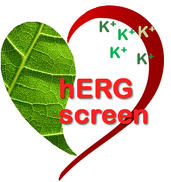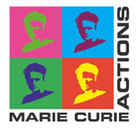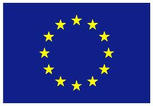hERGscreen
hERG related risk assessment of botanicals
FP7-PEOPLE-2011-IRSES project 295174

About the Project
The main goal of this project is the establishment of a network between European, South American, North American and South African educational and research entities. This attempt is based on an innovative scientific project aiming towards the identification of hERG (human Ether-à-go-go Related Gene) channel blockers in commonly consumed botanicals and supplements.
Blocking these ion channels may result in ventricular tachyarrhythmia and an increased incidence of sudden death. Thus, the hERG channel is considered as an important antitarget. Several drugs have been removed from the market for this reason, and compounds have been blocked from proceeding further into phases of clinical development. As botanicals (comprising dietary supplements, spices, herbal medicinal products) continue to increase in popularity there is an urgent need for studies aimed to critically assess the potential cardiotoxic risks of these products.
Workflow
State-of-the-art methodologies and techniques are incorporated for target-oriented identification and isolation of hERG channel blocking constituents. Pharmacokinetics (PK) and pharmacodynamics (PD) studies are performed and LC-MS based methods are developed and applied towards the measurement of bioactive components in biofluids samples. Comparison of biofluids derived from administration of single chemical entities and corresponding botanicals is achieved using MS- and NMR-based metabolomics. The obtained results will help to elaborate and evaluate hERG related safety aspects aiming towards the risk assessment of frequently consumed botanicals. Within this frame numerous short term and extended secondments of scientific staff will be accomplished, while the organization of several workshops will assure the proper dissemination of the produced knowledge throughout all the scientific community but also the public. Core scientific knowledge is expected to be produced and exchanged, and partnerships with future scientific potentials to be created.
Scientific Background
The hERG (human ether-a-go-go-related gene) encodes a delayed rectifier K+ channel that plays a pivotal role during the repolarisation phase of the cardiac action potential. Mutations in hERG leading to partial or complete loss of function prolong the ventricular action potential and may cause the dominantly inherited long QT syndrome (LQTS) with the risk of life-threatening torsade de pointes (TdP) arrhythmias and sudden cardiac death. Although the mechanisms underpinning drug-induced TdP are far from being fully understood, there is genetic and pharmacological evidence highlighting the pivotal role of hERG.
The blockade of the hERG-encoded potassium channel is a key factor in pro-arrhythmic liability of a wide range of chemically diverse drugs. Several drugs have been withdrawn from the market or have had their use restricted because of a potential torsadogenic effect. The apparent link between hERG channel block and ventricular arrhythmias has prompted extensive screening studies during drug development. The risk that a drug will induce LQT has been assessed by recording action potentials in single myocardial cells and multi-cellular myocardial preparations, and ECG measurements of the QT prolongation in animals. An important indicator for possible arrhythmogenic liability of a given compound (cpd) is the inhibition of hERG currents in heterologous expression systems.
This issue is reflected in the guideline on the non-clinical strategy to unmask the QT prolonging potential by human pharmaceuticals published by the ICH (International Conference on Harmonization) in 2005 (ICH S7B Guideline). For a non-clinical testing strategy, first risk assessment for delayed ventricular depolarization and QT interval prolongation is performed using an in vitro IKr assay that evaluates the effects on the ionic current through a native or expressed IKr channel protein, such as that encoded by hERG (ICH S7B Guideline).

Though there are strict guidelines for torsadogenic risk assessment for pharmaceuticals in the drug discovery process, commonly consumed botanicals have never been screened for this effect so far. It is noteworthy to mention that IKr blockade and proarrhythmic potential are dose-dependent. Thus, the concomitant use of agents/pharmaceuticals known to prolong the QT interval together with hERG channel blocking botanicals could therefore increase the cardiotoxic risk.
The hERGscreen project is of high relevance for public health worldwide since it aims to critically assess the potential cardiotoxic risks of plant derived products and, thus, to improve consumer and patient safety by identifying safety liabilities of botanicals.
Department of Pharmacognosy
Althanstrasse 14
A-1090 Vienna, Austria
T: +43-1-4277-55255
F: +43-1-4277-855255






